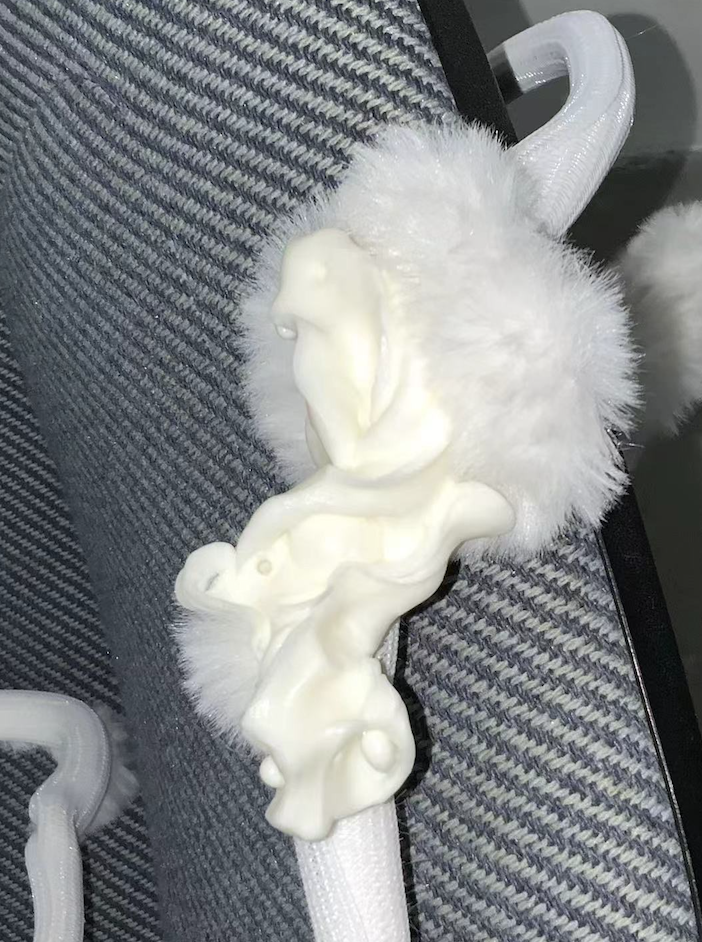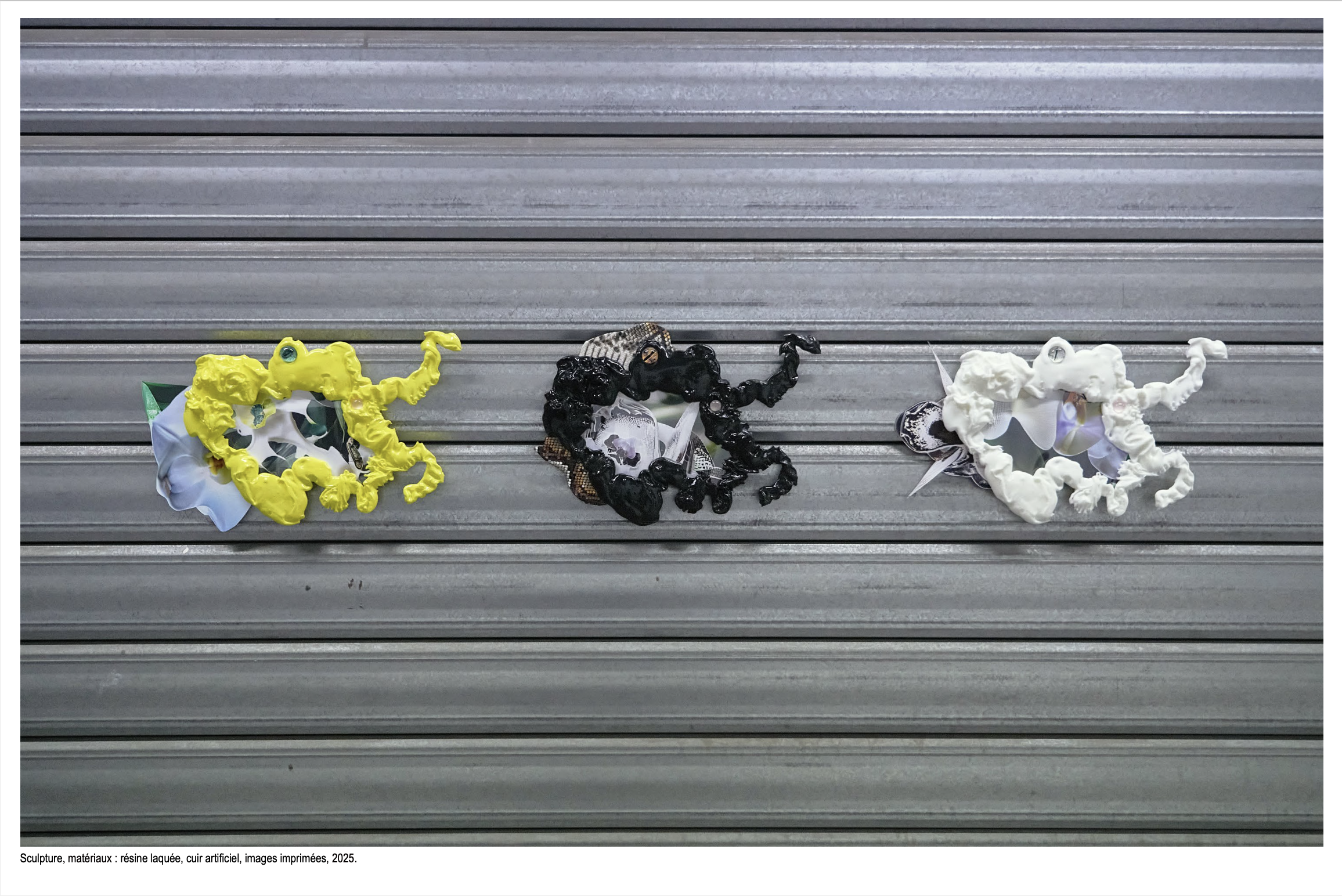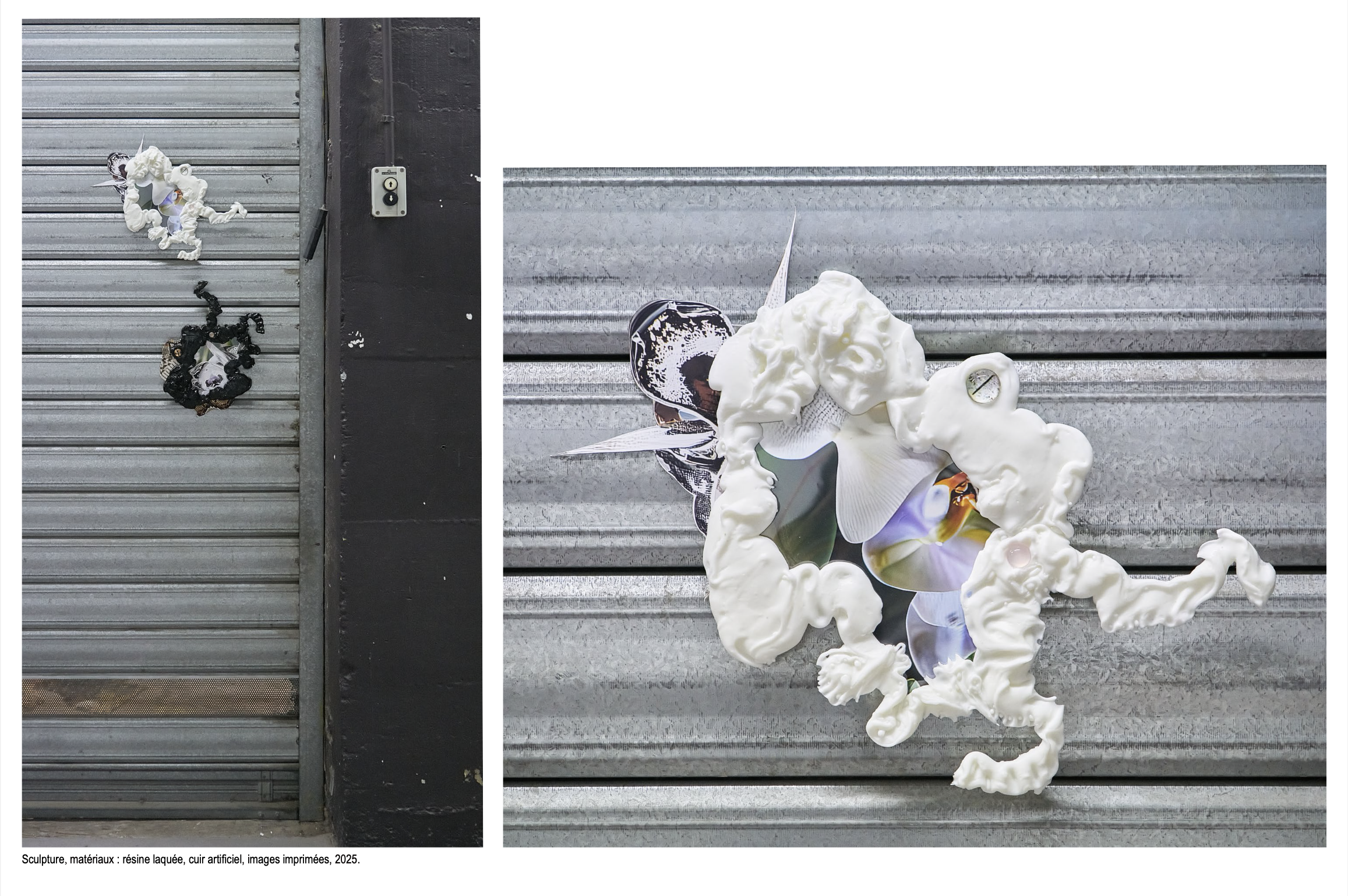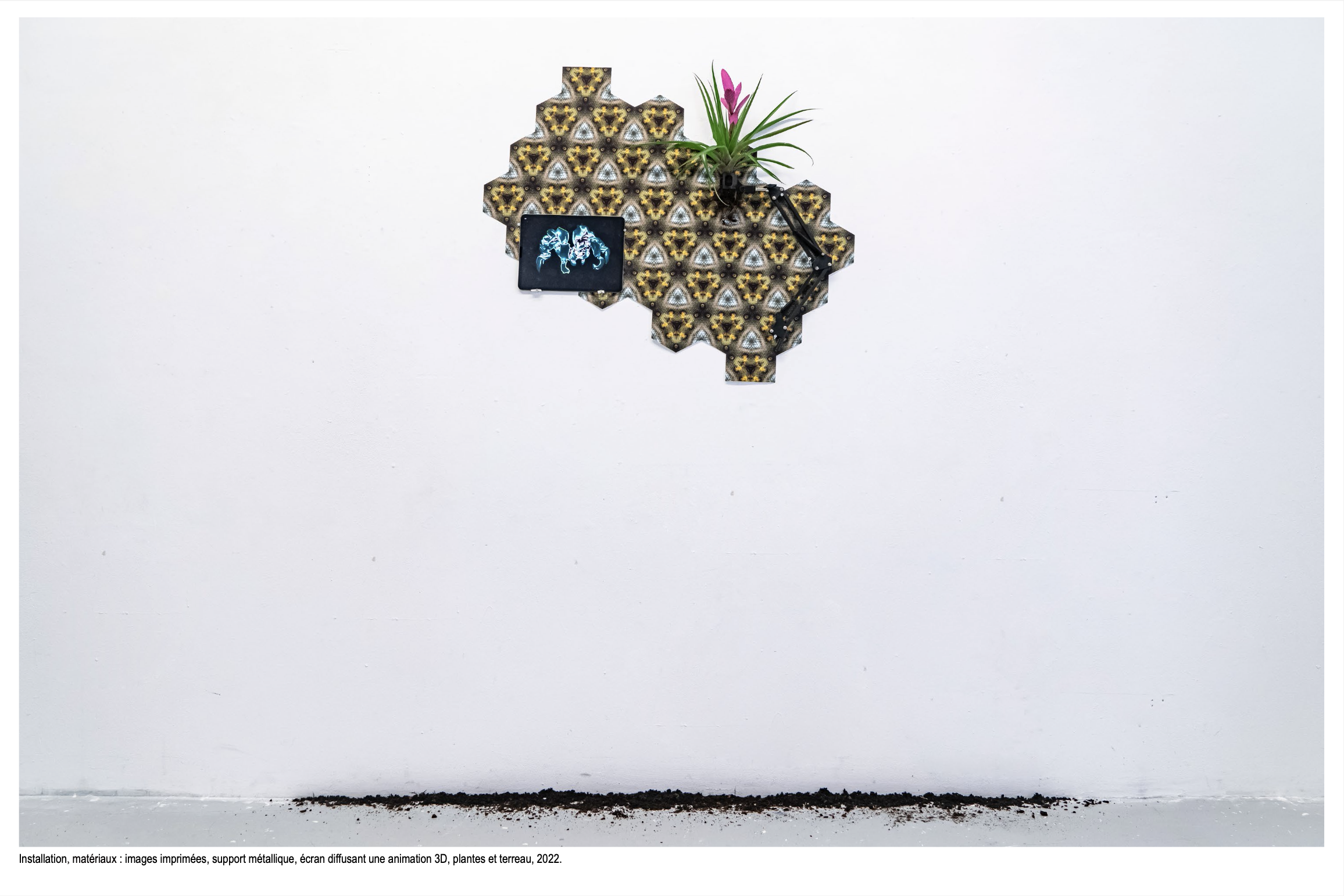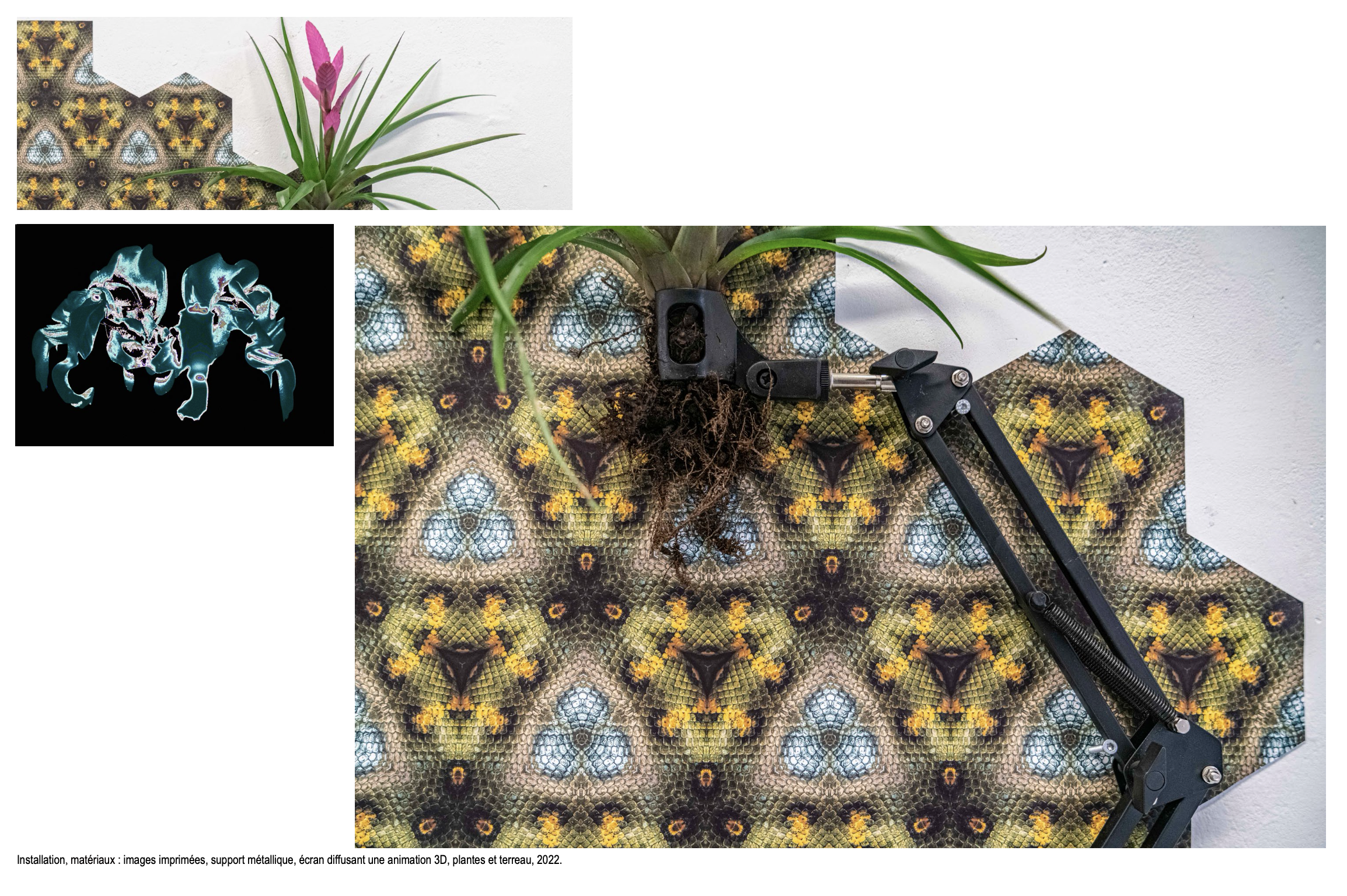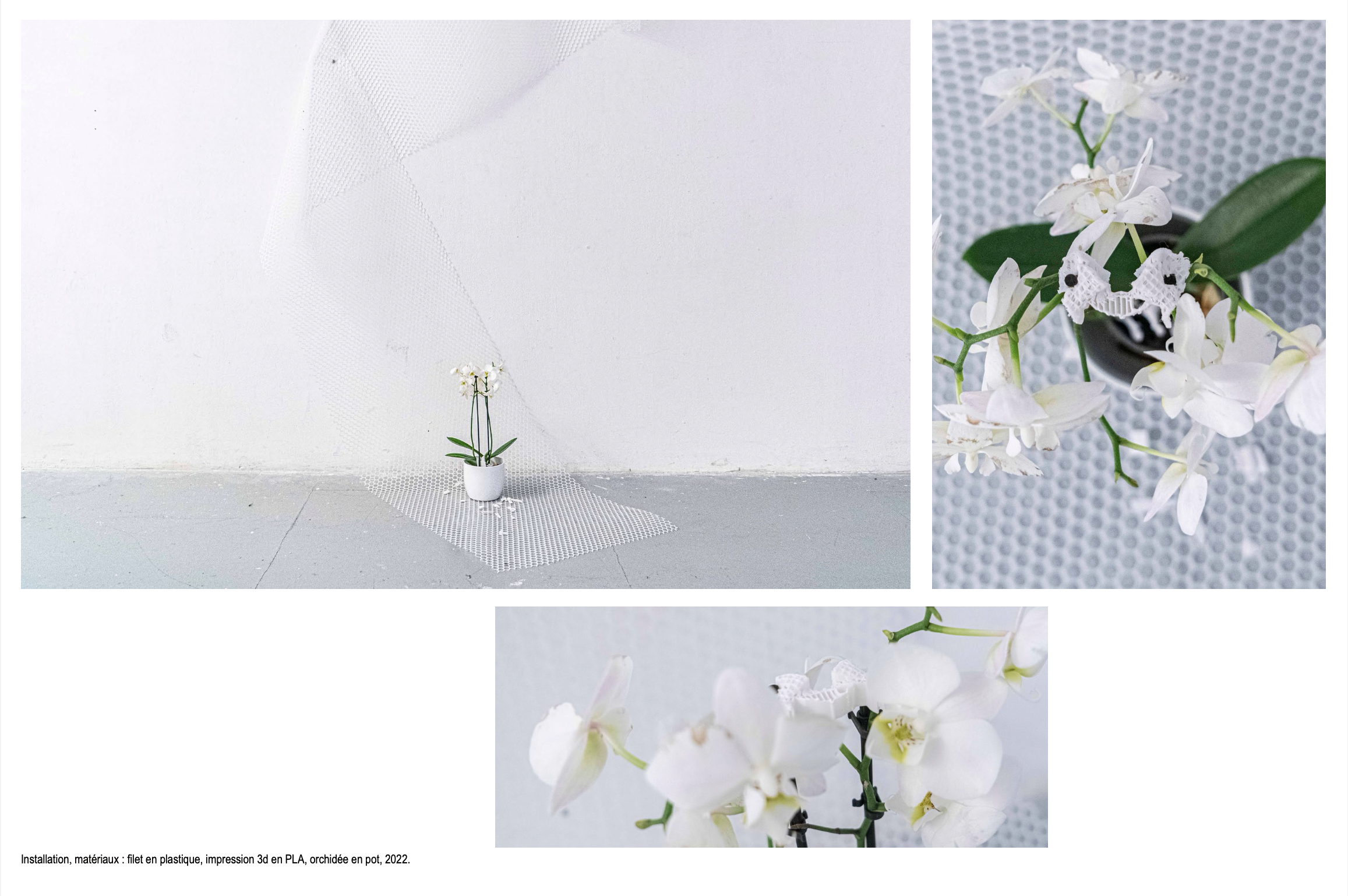fish-and fishing fish-and fishing
September 29, 2025COMMENT LE SOL REDEVIENT-IL UNE PARTIE DE MON CORPS ?
2022, 2025
Médium : Sculpture, image numérique, génération d’IA, vidéo 3D, installation.
Dimensions : Variables.
Matériaux : Images imprimées, support métallique, écran, plantes et terreau en pot, résine laquée, cuir artificiel.
Y aurait-il une greffe possible pour réunir à nouveau toutes les existences posées sur la terre, organiques et inorganiques ?
Les formes issues des produits industriels — ces morphologies marquées par la fonctionnalité et l’esthétique de l’outil — entretiennent avec les textures et les phénomènes de mimétisme du monde naturel un lien subtil et isomorphe: le mimétisme, en soi, constitue déjà une stratégie fonctionnelle. Partant de cette observation, j’ai délibérément mêlé certains fragments industriels à
des caractéristiques mimétiques animales, afin de produire une morphologie ambiguë.
Des motifs de peau de serpent et de fleurs, omniprésents dans la production industrielle, aux objets manufacturés, en passant par les plantes en pot cultivées et domestiquées ou encore les ossements animaux transformés en décor : ces paysages en apparence « naturels » sont, en réalité, des constructions.
À travers l’installation, j’explore la relation composite entre artefacts naturels et artefacts artificiels. Dans ce jeu de reflets mimétiques, les frontières s’effacent et se reconfigurent, générant une forme à la fois absurde et équivoque.
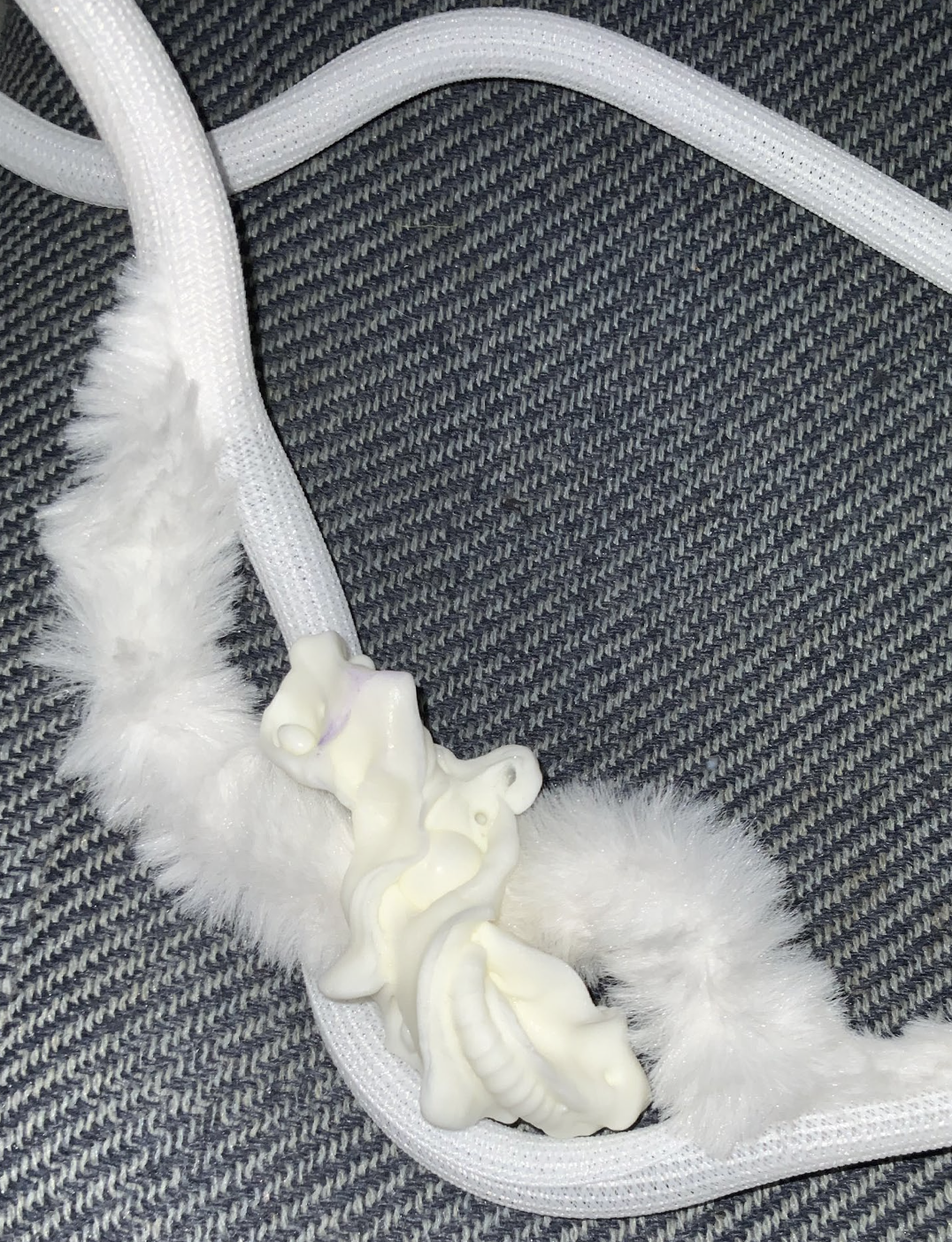
HOW DOES THE SOIL BECOME A PART OF MY BODY AGAIN ?
2022, 2025
Medium: Sculpture, digital image, AI generation, 3D video, installation.
Dimensions: Variable.
Materials: Printed images, metal support, screen, potted plants and potting soil, lacquered resin, artificial leather.
Could a graft be possible to reunite all existences resting on earth, both organic and inorganic?
The forms resulting from industrial products—morphologies marked by functionality and the aesthetic of the tool—maintain a subtle and isomorphic link with the textures and mimetic phenomena of the natural world: mimicry, in itself, is already a functional strategy. Based on this observation, I deliberately mixed certain industrial fragments with characteristics of animal mimicry to produce an ambiguous morphology.
From the snake skin and flower patterns omnipresent in industrial production, to manufactured objects, passing through cultivated and domesticated potted plants, or even animal bones transformed into décor: these seemingly “natural” landscapes are, in reality, constructions.
Through the installation, I explore the composite relationship between natural and artificial artifacts. In this play of mimetic reflections, boundaries blur and reconfigure, generating a form that is both absurd and equivocal.
